Hey everyone, it has been a rather slow year in terms of saving bees as we are approaching winter bees become a little less active, however the phone calls seem to be gaining momentum again. On this evening we went to a client whom had 'problem bees'!
As bees establish themselves and increase in numbers and their stored honey volume increases they tend to get more protective and aggressive, this is generally at which point folks call us to come and safely remove and relocate the bees!
The below pic I took as we removed the IBR sheeting. I first gently smoked the bees to pacify them and then slowly removed the covering sheet and snapped this shot. This is a rather interesting pic. I have been doing feral bee rescues for some time now as well as producing honey and to date never seen what looks to be red honey ??
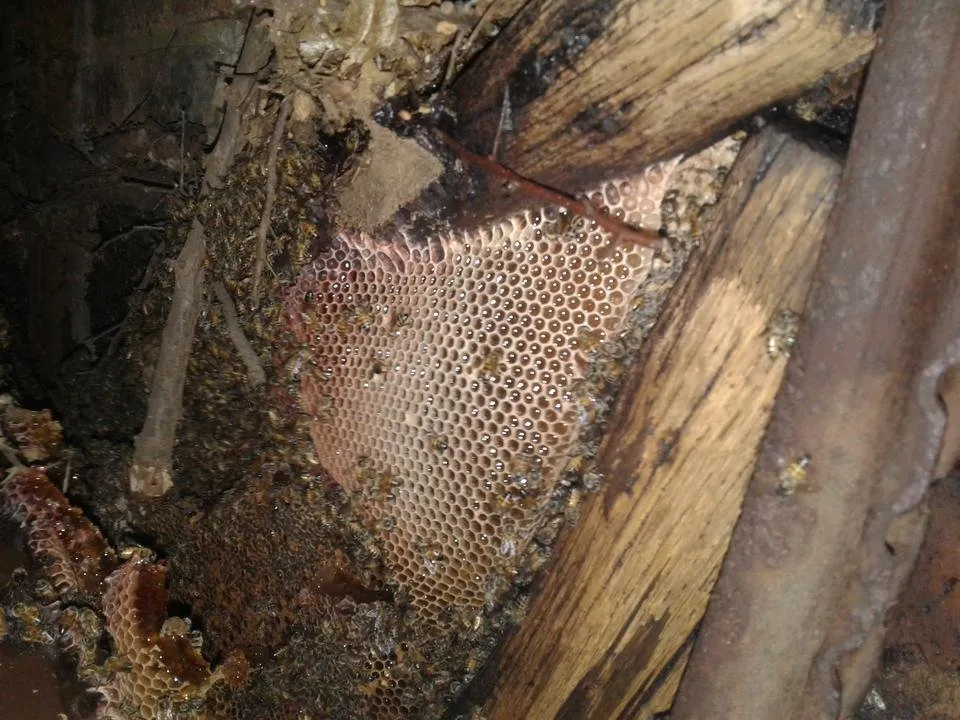
We have recently started using a red light for our night time rescues. We generally only ever save bees at night. They are all in their nest so we don't miss any bees as well as them been far more passive and relaxed at night. The darkness also renders an 'insurance' policy in the event things go wrong the bees can't see much as it is dark and do not go on a proverbial 'rampage'
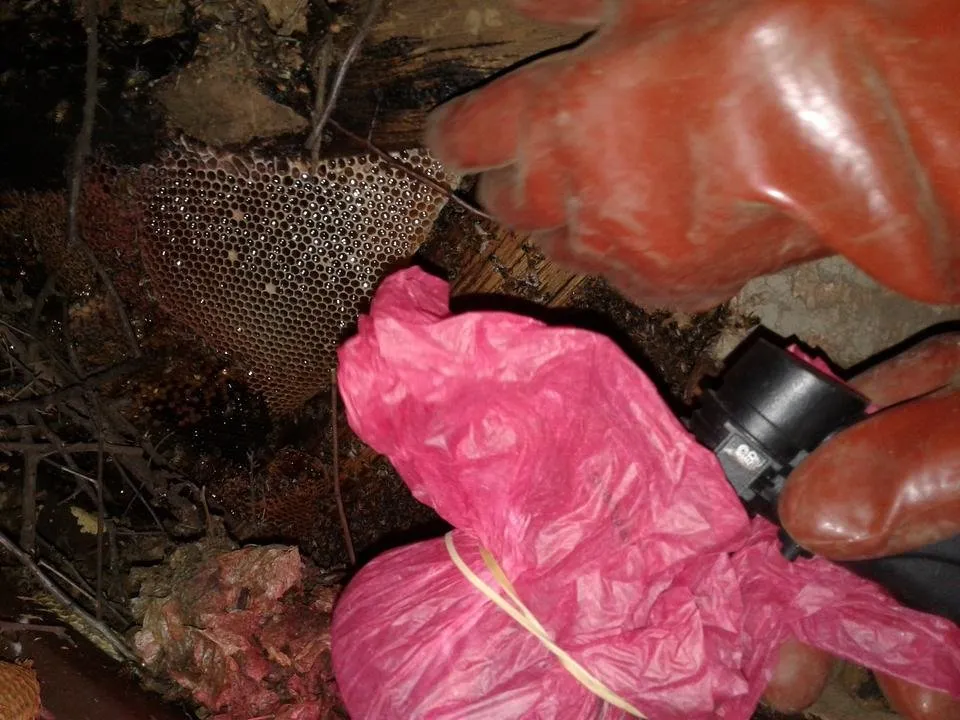
This is what the original sight looked like. I did not make this my index pic as it is no where near as the first one, you get the idea :)
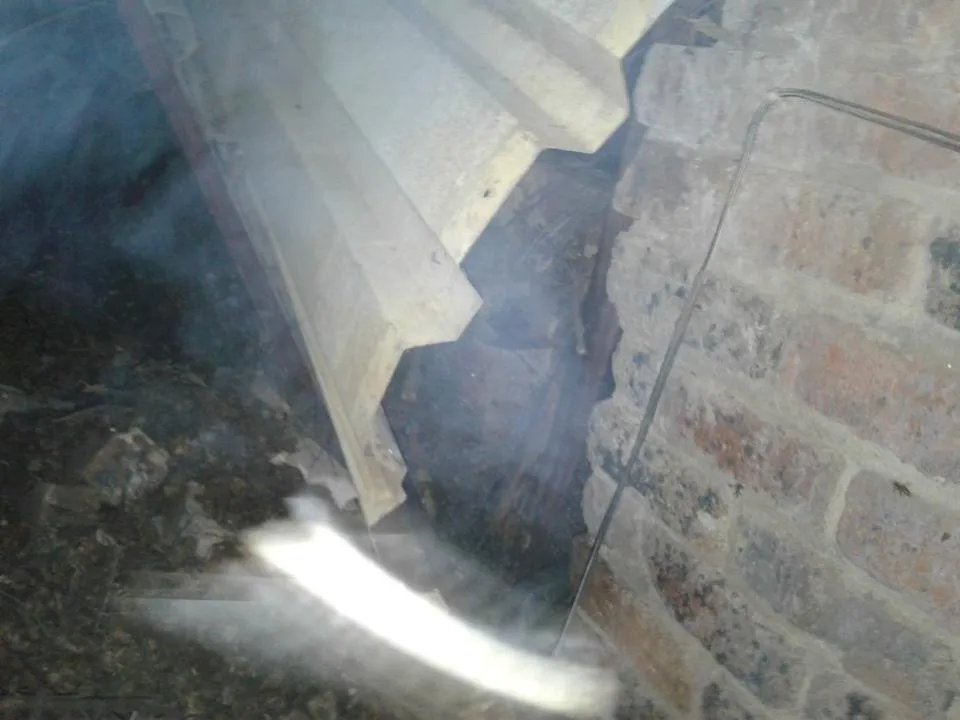
We put some pine needles (pine straw) in the smoker, lit it up and gently blew some smoke into their nest to calm them down in order for us to be able to manage them better.
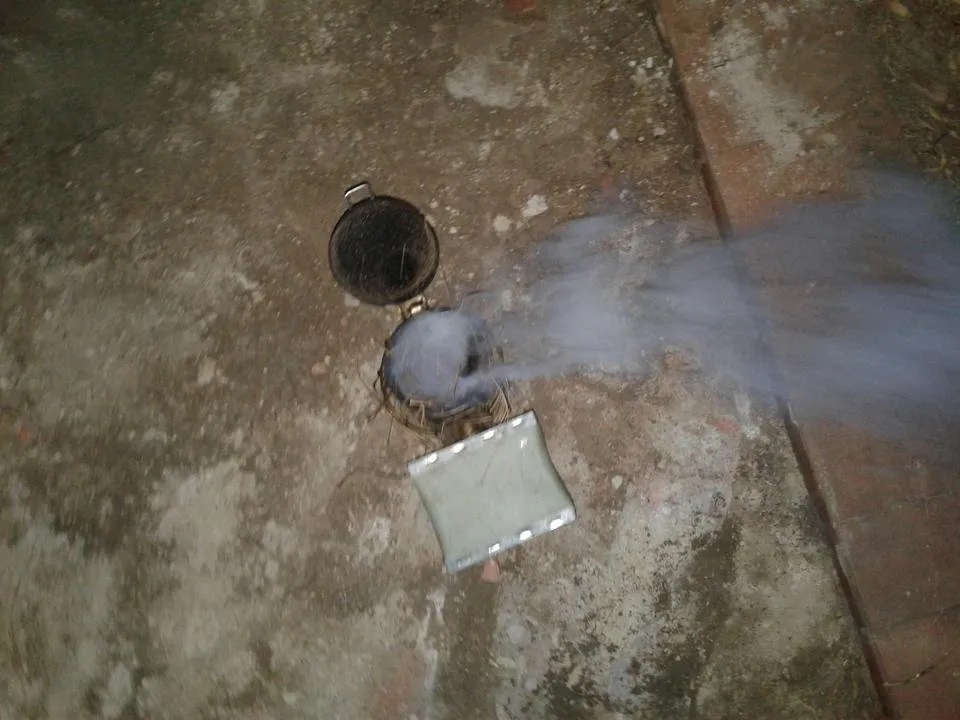

Here my partner busy putting on his gumboots, back left our super sucker unit which we use to safely extract the bees from their nest to be re-located later on.
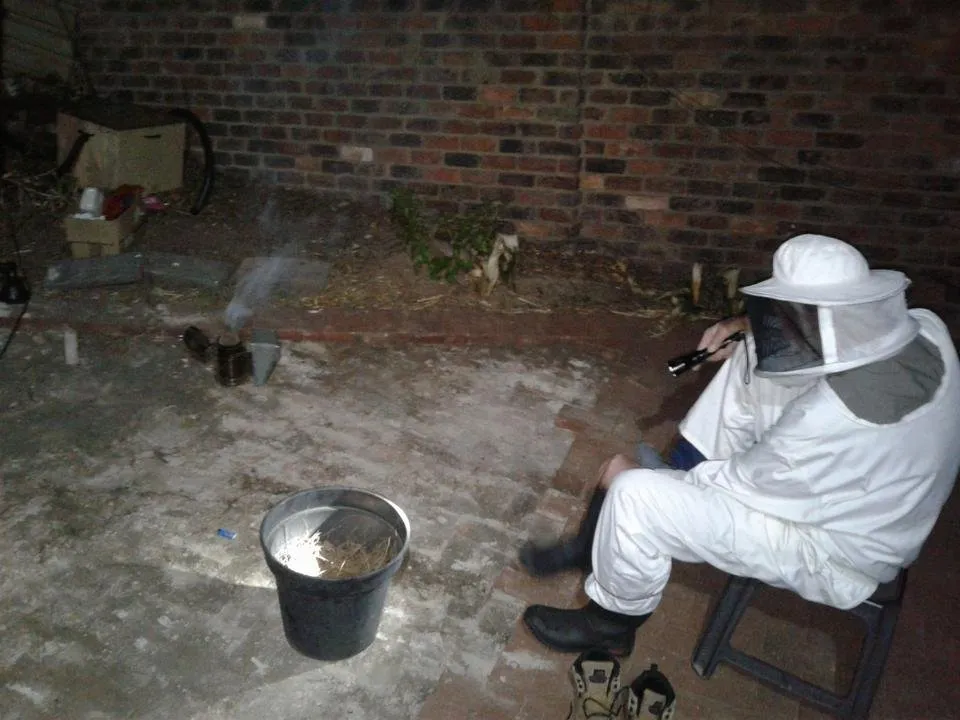
I generally light the pine needles and leave the smoker open for a while, it takes a little practice to get it to smoke optimally, too many pine needles and it does not light and too few means it burns out way faster. I generally half fill it, let them burn a little whilst the unit is open, add another half, close up give a few puffs and then smoke the bees with a cold air as not to damage them.

As we pulled away the IBR a lovely comb with red honey, at this point all the bees had clustered on the opposite side of the hive to escape the smoke, which naturally made it easier for us to work with and start to remove combs.
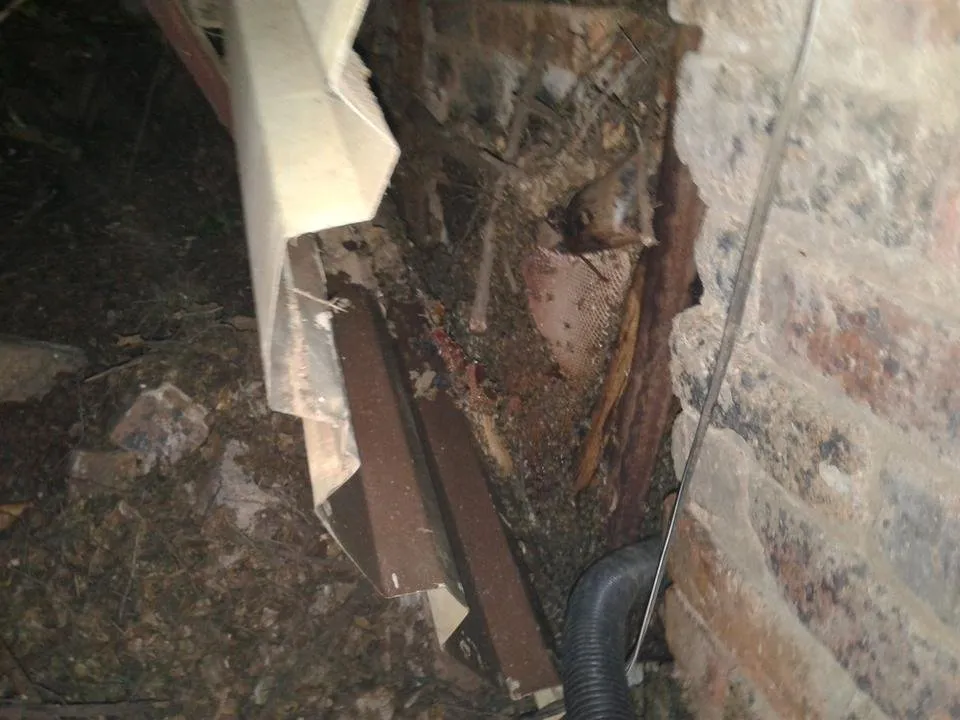



The black pipe (bottom right) which we used to gently suck the bees up into the sucker unit, bees already off the combs, 'clustering' in a defensive manner.
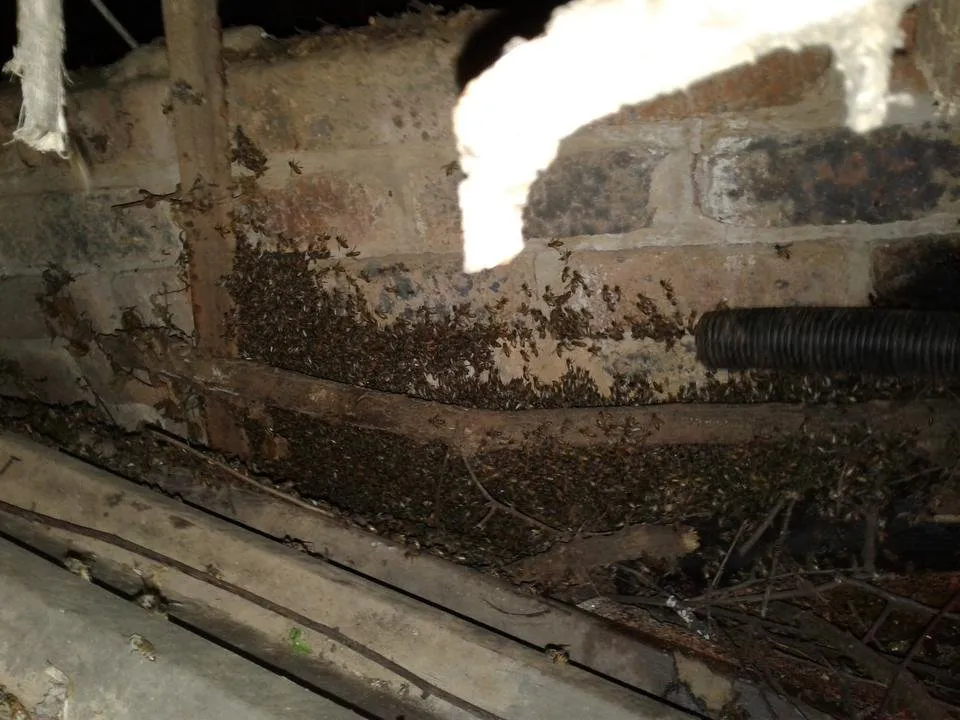
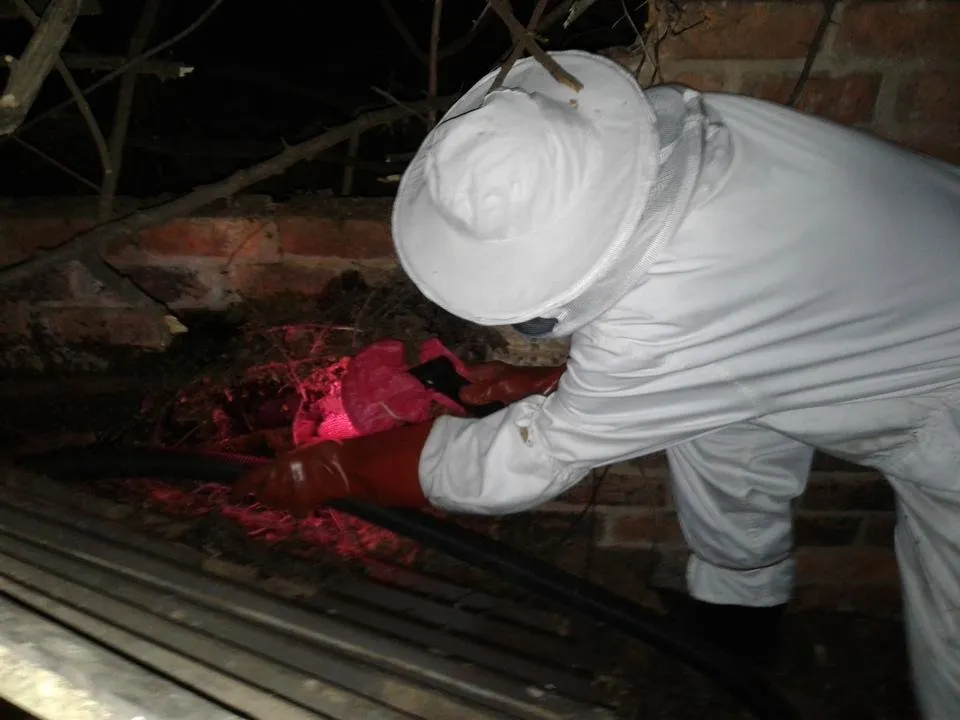
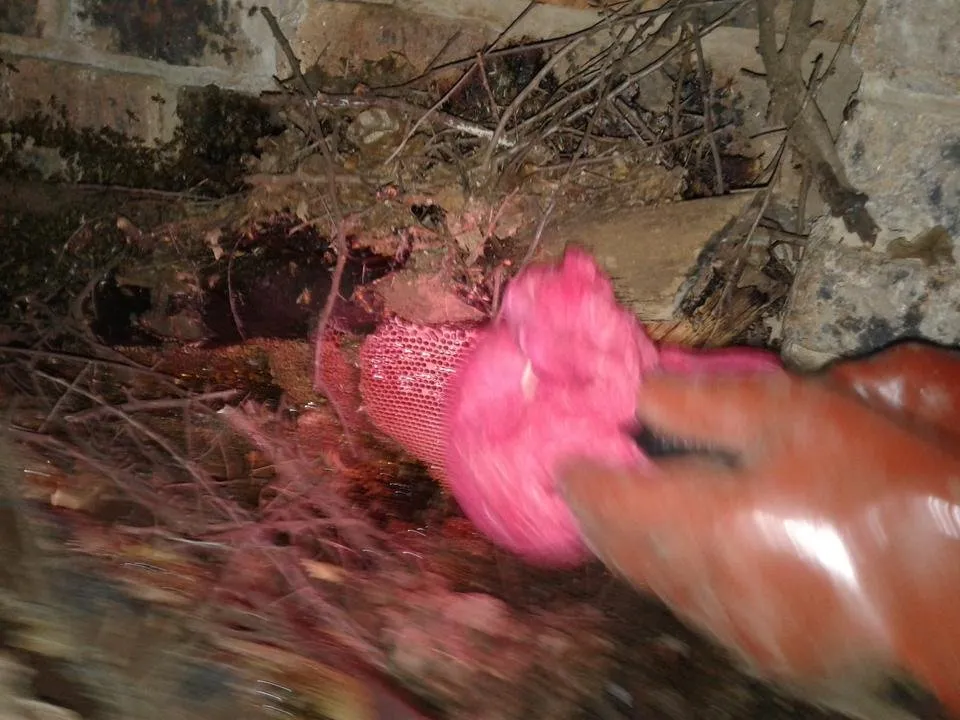



Here we have my partner with his red light inspecting, moving twigs, leaves and larger branches to allow us access to the bees and combs!
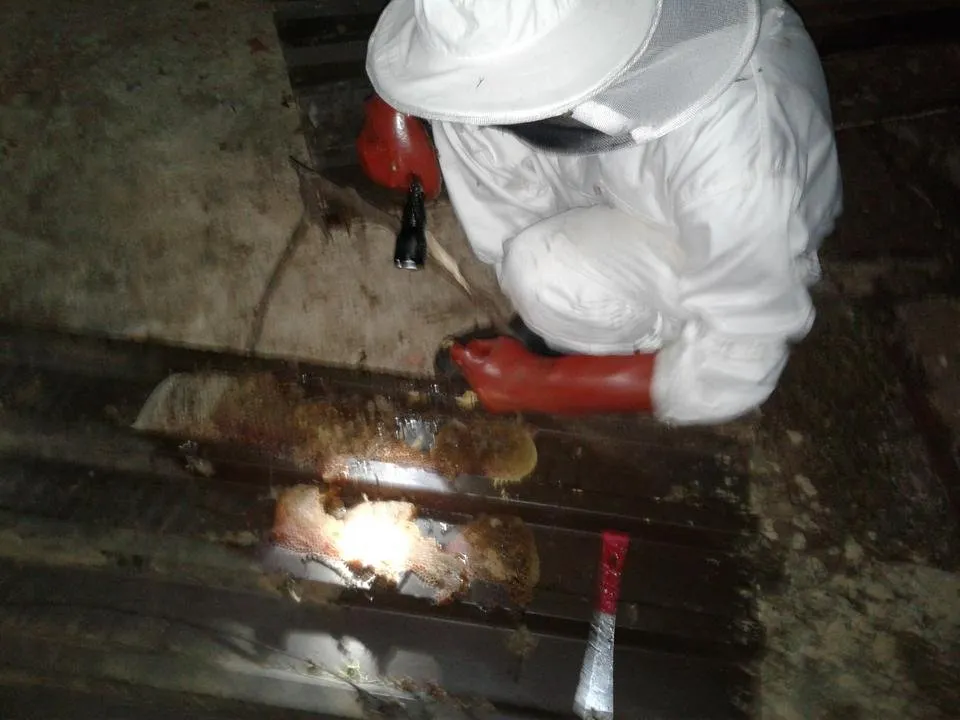
Like most of nature, bees also either fight or flight, once they know they are 'defeated' they generally pacify and let us do what we do, in this case they are clustered together and trying to avoid been sucked up by this very noisy machine, which obviously they don't know is actually saving them!
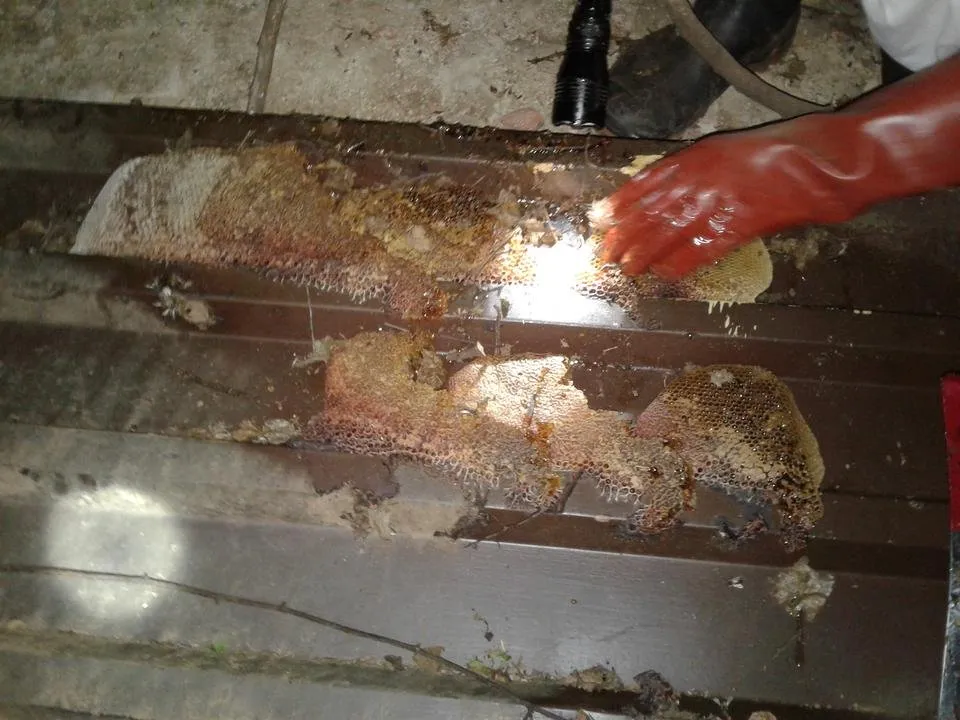
After we removed the IBR sheet from the wall, the bees had over time built and attached their combs to the sheeting as well as the bricks on the opposite end. Here a nice pic we took after removing the bees. We now gently removed all this mature capped honey and re-installed it in their new hive in order for them to feed and settle in faster and establish much quicker too.
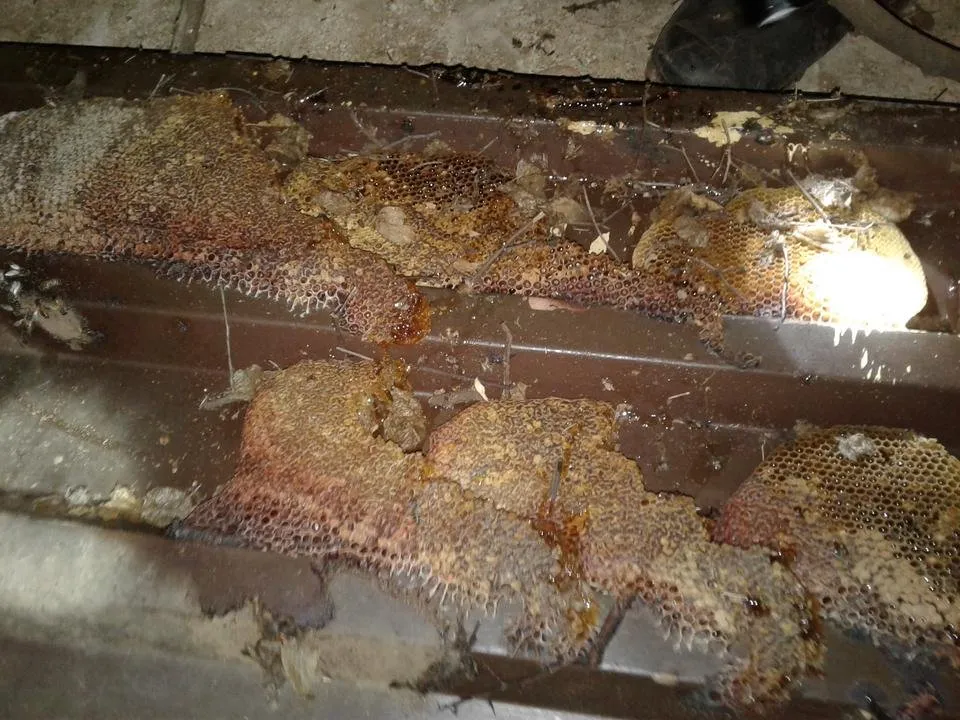
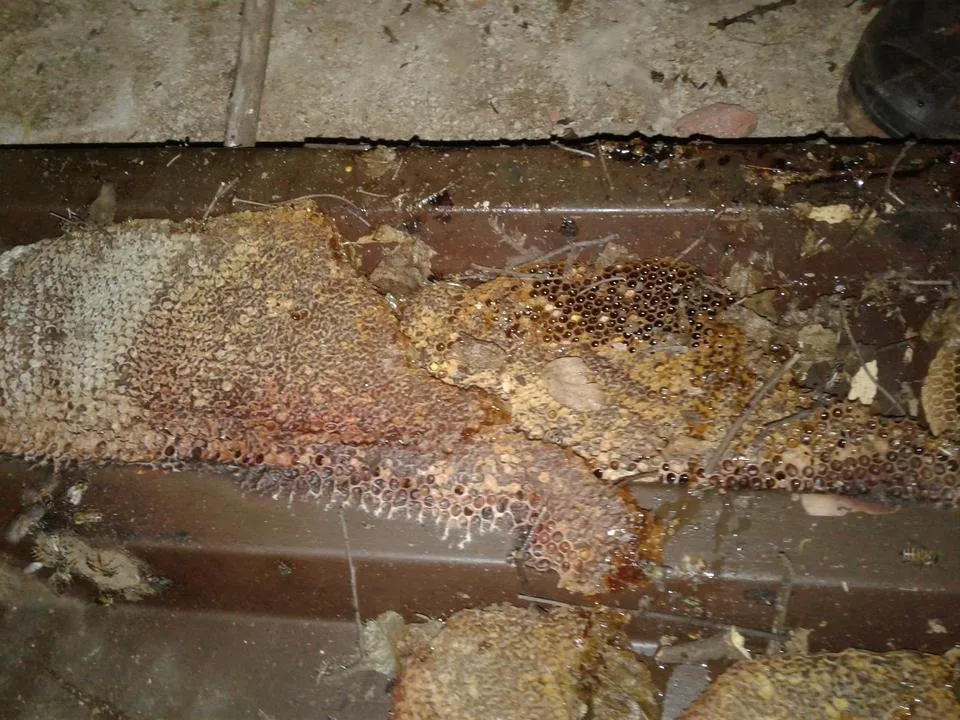
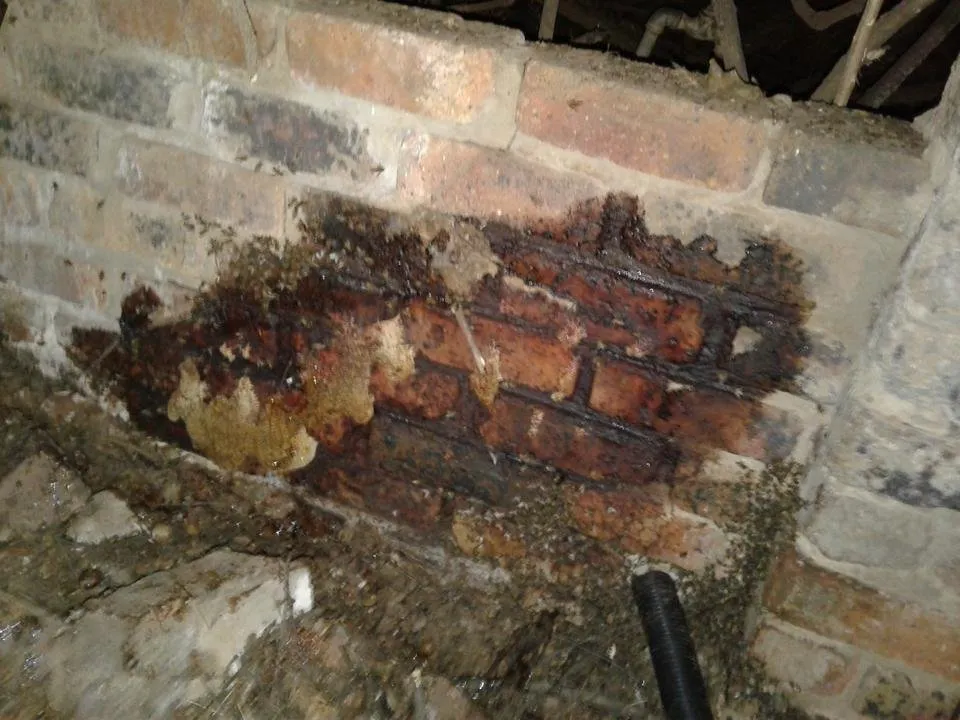
These pics are fantastic in illustrating the incredible use of propolis. As per wikipedia : Propolis or bee glue is a resinous mixture that honey bees produce by mixing saliva and beeswax with exudate gathered from tree buds, sap flows, or other botanical sources. It is used as a sealant for unwanted open spaces in the hive. Propolis is used for small gaps (approximately 6 millimeters (0.24 in) or less), while larger spaces are usually filled with beeswax. Its color varies depending on its botanical source, with dark brown as the most common. Propolis is sticky at and above 20 °C (68 °F), while at lower temperatures, it becomes hard and brittle.
While foraging, worker bees primarily harvest pollen and nectar, while also collecting water and tree resin necessary for the production of propolis.[1] The chemical composition and nature of propolis depend on environmental conditions and harvested resources.[2]
More of that here: https://en.wikipedia.org/wiki/Propolis
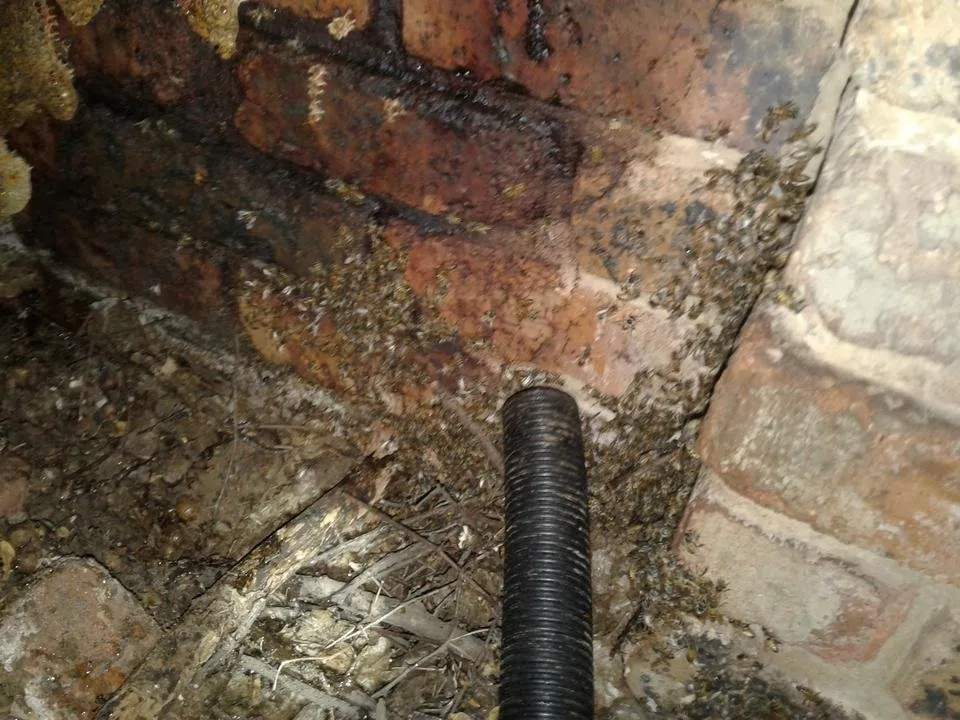
All that been said can you identify where in these pics propolis is present? That whole black spot on the wall is propolis, it is so clean and sanitary you can literally lick it. Bees smear it all over as to have a spotless, clean, hygenic living area. They really are incredible house-makers!
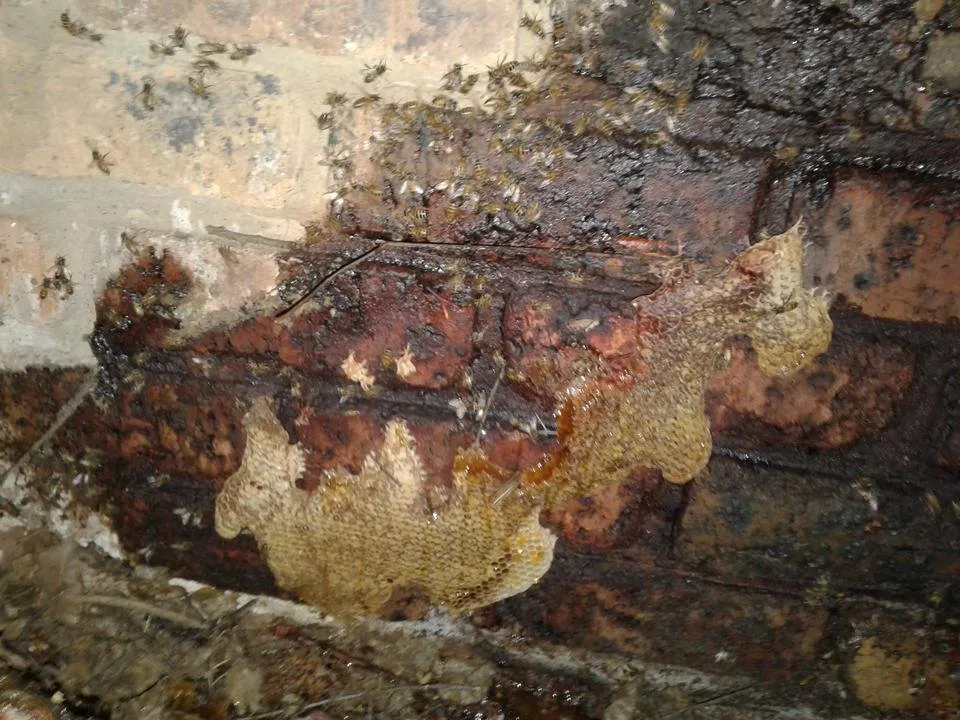

Here is the box in which we suck the bees to be housed temporarily (an hour or two) whilst we put their combs back into the new hive, later adding the bees.
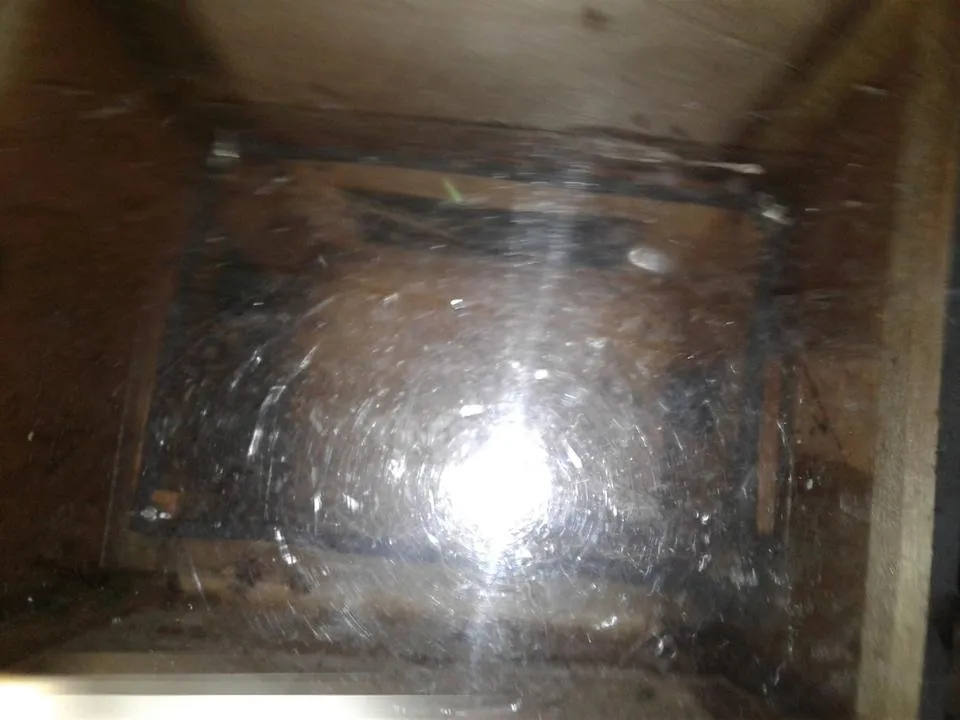
This is a catcher box from a swarm we safely saved and relocated the previous night. The swarm size was half of this 'wall swarm' but these will also be in this Nursery around other healthy, happy, thriving rescue bees!

Our Swarm count is now 33, amazing in just 8 short months come the next honey flow season August-Sept we will have an abundance of delicious raw nutritious honey and more than likely around 60 hives by that time! It promises to be an incredibly interesting, rewarding and amazing journey further, if the last 8 months is anything to go by I can certainly guarantee it will!
I shall take some pics of the progress soonest and blog them too. I inspected them today and at least half the bees are sitting outside their new hive. This is an indication of both heat as well as bee volumes very high, we added a super immediately as to give them more space, this should solve the problem.
Be sure to stay tuned for more of my epic bee-keeping adventures.
Cheer$;)